Remaking Tony Stark in the Bronze Age…
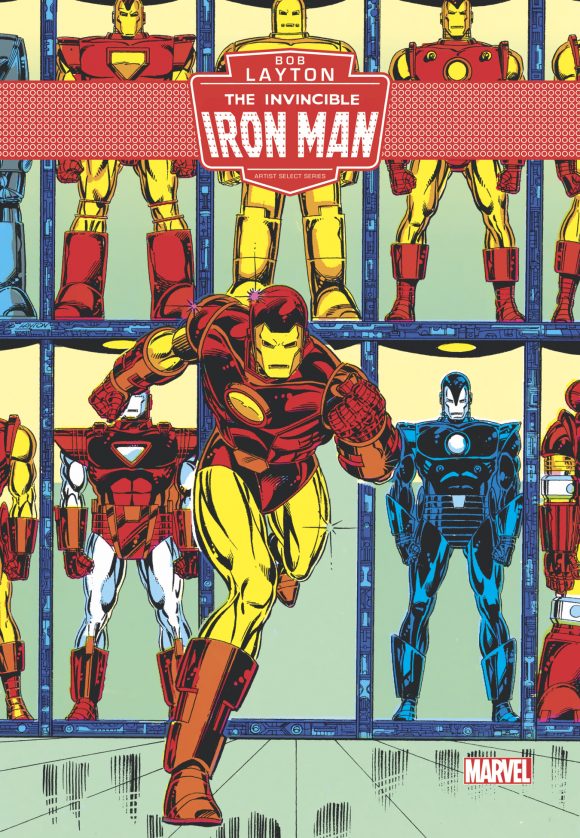
IDW does a great job preserving comics history beyond the standard omnibus or trade paperback. There are Artist Editions and Artifact Editions that showcase original art. But there’s also the Artist Select Series, which reprints swaths of important comics work in full color, with a selection of extras that place the material in context.
The latest is the Bob Layton: The Invincible Iron Man Artist Select Series (out 12/19), which includes 16 prime issues from his classic late ’70s run with co-plotter and scripter David Michelinie — including the the lead-up to 1979’s groundbreaking Demon in a Bottle (reprinted elsewhere). The slipcased hardcover, which collects 16 issues at an oversized 9″ x 13″, is limited to 999 copies, each signed by Layton. It carries a listed price of $125. (The issues collected include 124, 125, 126, 127, 131, 132, 133, 144, 149, 150, 228, 231, 232, 234, 249 and 250.)
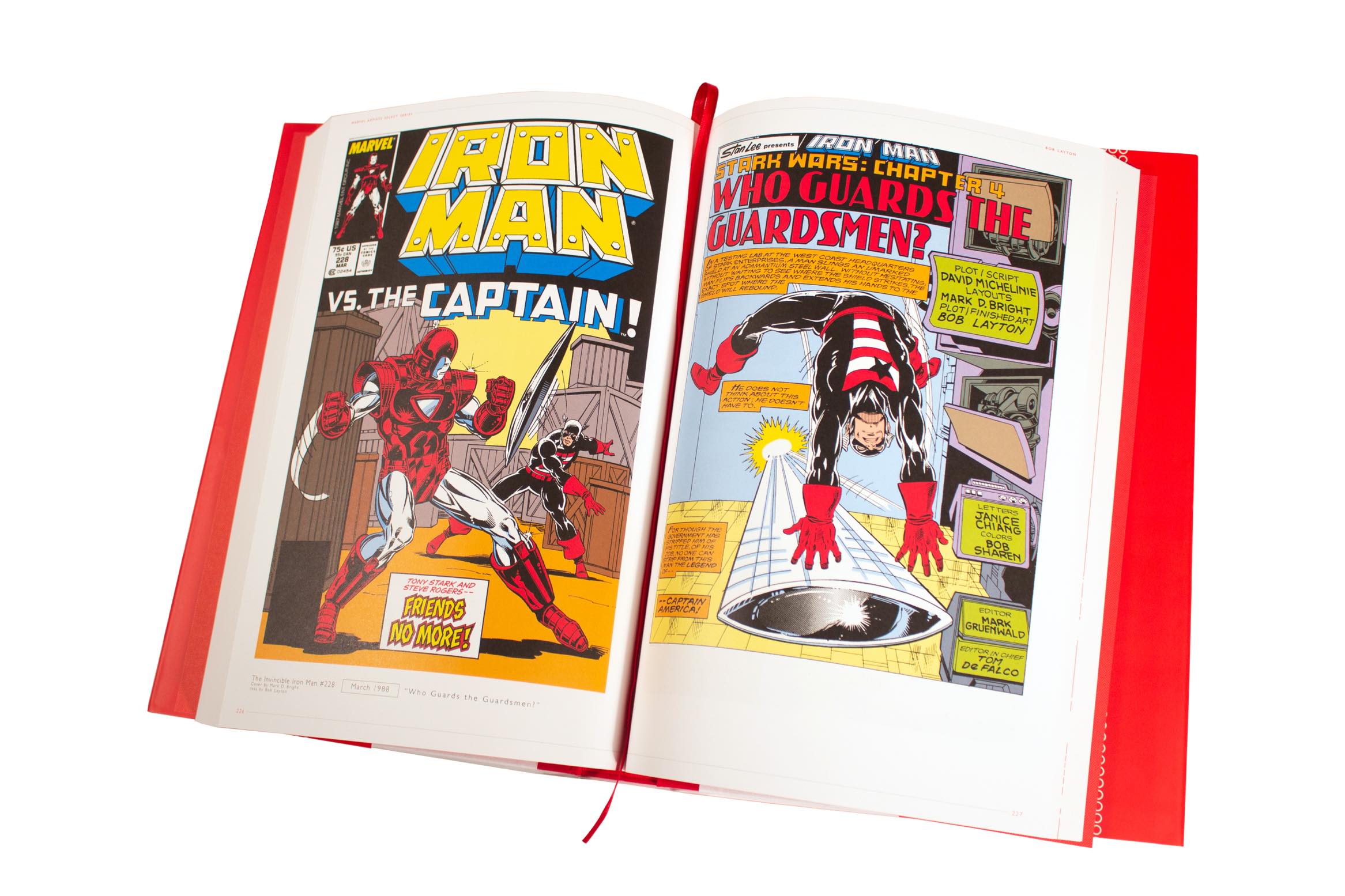
There’s also a lengthy interview with Layton conducted by IDW exec Chris Ryall, in which the artist reveals his early disdain for the Armored Avenger, discusses his working relationship with co-plotter and scripter David Michelinie and does a deep dive into the issues themselves.
Here’s an EXCLUSIVE excerpt that merely scratches the surface.
Dig it:
—
Chris Ryall: Hi, Bob. We’re beginning the book with a landmark issue from your initial tenure on Iron Man, but that wasn’t your first issue of Iron Man. Before we get into the specific issues contained in this book, I’m curious how you got the Iron Man assignment in the first place. Was he a favorite character of yours?
Bob Layton: Strangely, it was my childhood disdain for the character that made me to want to get my hands on it.
Allow me to explain. I had signed an exclusive one-year contract with DC in 1977. Just before my contract expired, writer David Michelinie and I had formed our co-plotting partnership there, working together on Star Hunters and Claw the Unconquered. We both sensed an impending “implosion” and didn’t want to be a casualty of it. So, we agreed to leave the company together for greener pastures.
Since I knew the editors at Marvel, having worked on The Champions and the X-Men prior to my DC contract, we went there in 1978 and interviewed to work as a team. We were given an option to take over one of their few lower-end books slated for cancellation and I jumped out of my seat when I realized that Iron Man was one of those choices.
I suppose Marvel figured that these two newcomers wouldn’t hurt anything because they pretty much gave us free rein to do whatever we wanted with the title. Before we took over the series, Tony Stark was little more than a vehicle used to get the armor on him and go into action. I felt that it was more important to concentrate on the man inside the suit rather than the suit itself. That’s why we introduced an entirely new cast of supporting characters and changed the emphasis of the series to the world of corporate intrigue.
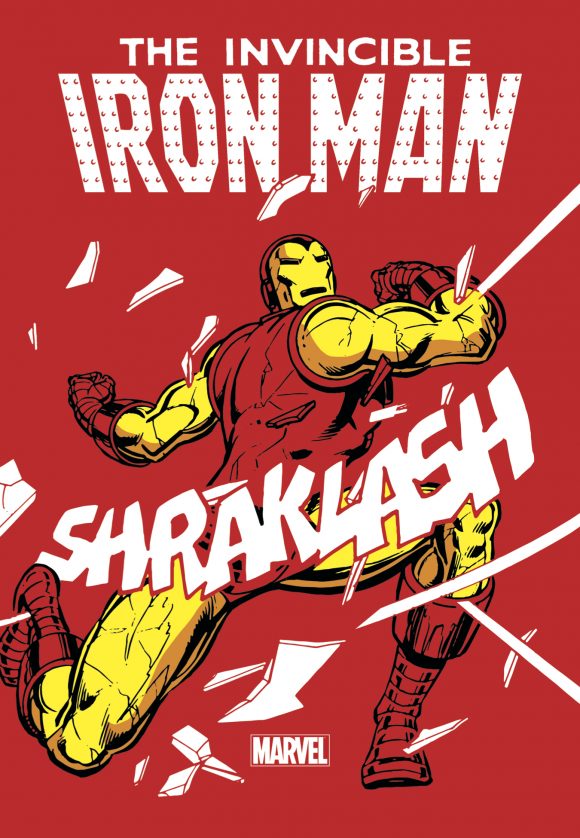
I always thought that, given a choice between being Iron Man or Tony Stark, I’d much rather be Tony! He had the expensive toys, the women, the money, and was always the smartest guy in the room. That seemed like a much more attainable fantasy to a teenage Bob Layton.
David was never a hardcore Marvel fan in his youth like me. He was always a “DC Guy.” I believe that David’s lack of a personal history with Marvel’s mythology, and Iron Man in particular, proved to be a tremendous asset, translating into a much fresher approach to the character.
I’d have to admit that I hated the Iron Man title as a kid. People forget that Stan Lee never wrote the series. Stan came up with the concept and handed it off to his brother, Larry Lieber. No disrespect to Mr. Lieber, but he was no Stan Lee. Larry gave us 30-foot Neanderthal robots created by aliens and the like. To me, Iron Man always seemed much cooler in The Avengers, which Stan wrote himself. My primal memory of Iron Man was him writhing on the floor, clutching his heart in almost every issue. I know that’s probably not true but that’s what teenage Bob remembered.
I was also attracted to the character because he doesn’t have superpowers like Superman or Spider-Man. He wasn’t an alien, a mutant, and wasn’t plagued by other non-scientific conveniences, where the hero, say, gets bitten by a radioactive rhinoceros and becomes… RHINO-RANGER!
Here’s what always bugged me about those kind of heroes: almost immediately, Rhino-Ranger somehow knows he has the proportional strength of a rhino, runs into the street, and rams his head into an oncoming truck, just to demonstrate his newfound abilities.
How the hell does he know that his brains won’t spatter all over the freaking grill?
He doesn’t. That’s my point.
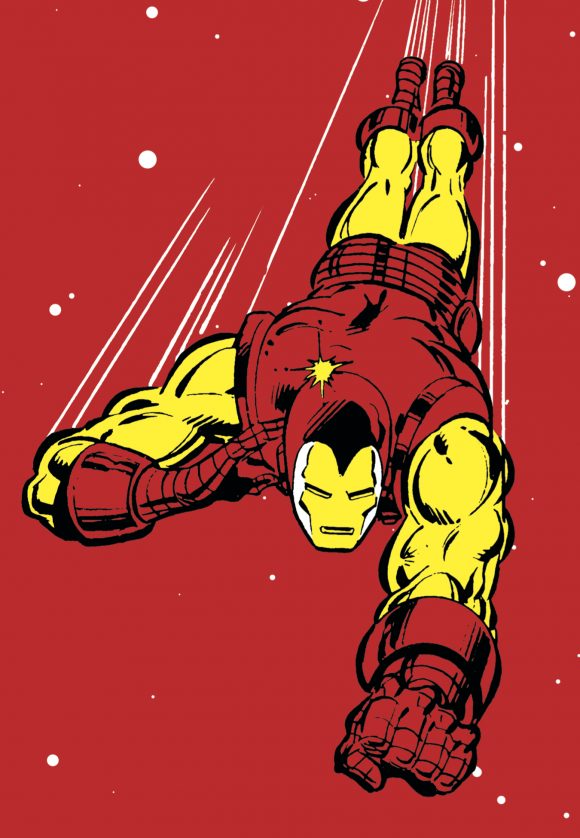
In contrast, Tony Stark’s abilities came from the technology created by his own genius, which made him a much more credible character to me as a creator.
In my mind, I saw Tony Stark as the character who doesn’t play at the superhero role like other comic-book heroes do. That was one of the things that separated him from the other Marvel heroes, like Spider-Man being a teenager distinguished him from the rest of the pack. Stark would use the Iron Man persona to protect his various business interests globally and to keep himself grounded to the “real world.”
I saw Tony Stark as a guy who lives in an ivory tower, surrounded by people who only tell him what they think he wants to hear. He has a celebrity status equal to any movie or rock star. That’s not a guy who lives in the “real world” and I always wanted to explore that concept.
As I said earlier, I was frustrated with Iron Man when I was a kid. So, I went so far as to write my own Iron Man stories when I was young and created my concepts for variant, specialty armors. When I was actually handed the reins to the series at Marvel, fulfilling my dream of being able to work on Iron Man, I was able to include many of those stories and designs in the regular series.
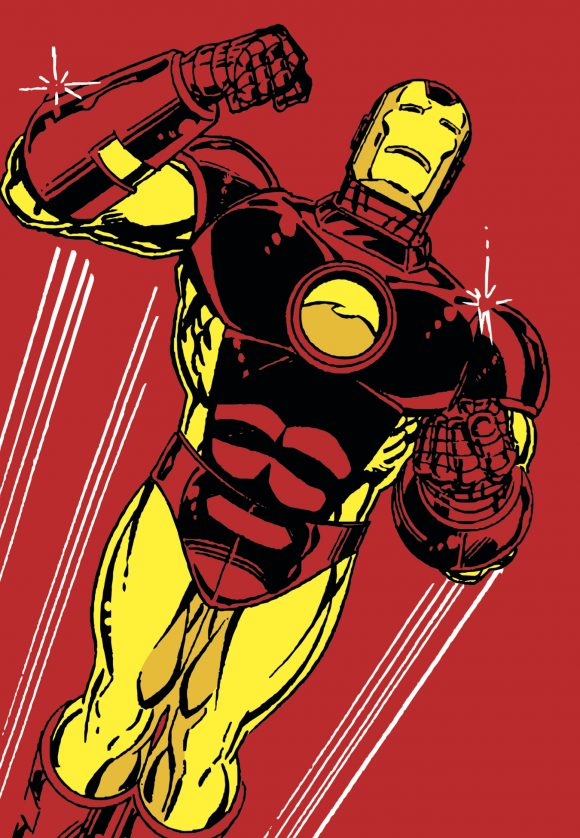
I grew up reading the Arthurian Tales and I always saw Tony Stark as a modern-day King Arthur.
And, Iron Man never looked like he was wearing a metal suit of armor.
In fact, the Doomquest Saga was based on a little comic I wrote and drew on notebook paper when I was 11 years old. I told Michelinie about it during one of our plotting sessions and he thought it was a great idea, so we ran with it!
Like I stated earlier, we were given a free hand to change the premise of Iron Man any way we wished, since the book was slated for cancellation as soon as the 12-month newsstand distribution contract ran out. So, we changed the emphasis of the series to Stark’s corporate world and started down that road, away from clutching his heart every issue to becoming a bad-ass armored Avenger who would eventually knock out the Hulk!
By the time we neared the end of our first run, around Iron Man #150, sales had grown to nearly half-a-million copies a month. And the rest is history, as they say.
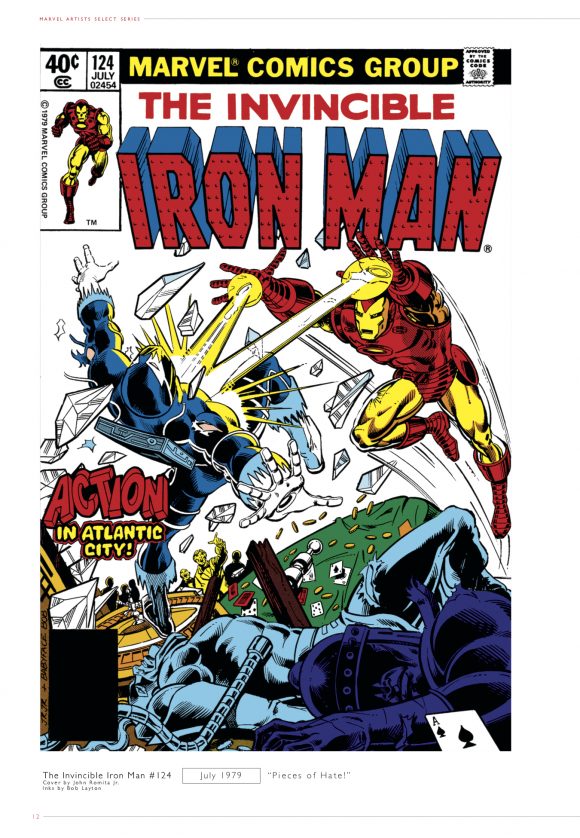
Ryall: Most definitely. That history you two created is why we’re talking today. So, by the time you got to Issue #124, the first issue included in this book, you’d been on the book for about a year and working as the title’s inker and co-plotter. We’ll get into your inking process later but regarding you co-plotting with writer David Michelinie, how did that work? Who drove the storyline bus initially?
Layton: David and I had a 50/50 relationship on the plots, with both of us contributing equally to the story and character development. I think David and I genuinely complemented each other creatively, although we were distinctly different human beings. We approached the series by starting with a 12-issue story arc. We would have an all-day plotting meeting where we would work out the bare bones of where we were and where we wanted to go with the storyline over the coming year. Using that outline, we would flesh out each individual issue as the plots came due. In retrospect, the mechanics were similar to how showrunners work in Hollywood. I suppose we were ahead of our time, in that regard.
Eventually, we both went on to do solo stuff after our first run on Iron Man (Issues #116-153), because I was anxious to strike out on my own as a writer, which I did with my first mini-series, Hercules: Prince of Power. David moved on to write The Avengers and Amazing Spider-Man.
However, fate kept drawing us back to the character of Tony Stark over the years.
—
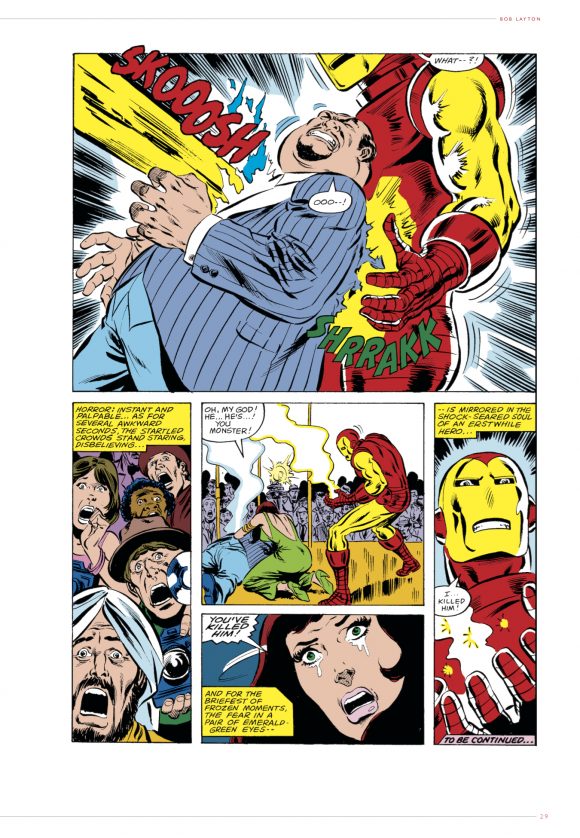
Issue #124. Breakdowns by John Romita Jr. Finished by Layton “and friends.”
Ryall: A couple things stand out in #124: Your portrayal of such a strong female character as Bethany Cabe, who more than held her own up against anyone, from Tony to super-villains; also noteworthy and far more shocking is the way the Carnelian ambassador meets a brutal end thanks to an unexpected repulsor-ray blast. What was the feedback on that scene at the time, from both editors and fans? I imagine it’s a scene that people still cite regularly when you meet fans at conventions.
Layton: We wanted the death of the Carnelian ambassador to be memorably graphic. Iron Man had been a “clean character,” if you get my drift. The series was always a straight-up superhero adventure without any messy gray areas. The shock of seeing a mainstay Marvel character seemingly murder someone in cold blood was a deliberate move to shock the readers out of their comfortable zone.
We were making an attempt to rewrite the tone of the series and created the momentum that would drive Tony Stark towards his date with destiny in Demon in a Bottle (Iron Man #128). As I said, Marvel gave us a free hand to drive the series wherever we felt it needed to go. Sales were beginning to climb and the fan mail had tripled by that time, so I think they were simply following the old adage: “Don’t look a gift horse in the mouth.”
So, no, there was no real editorial blow-back to that scene.
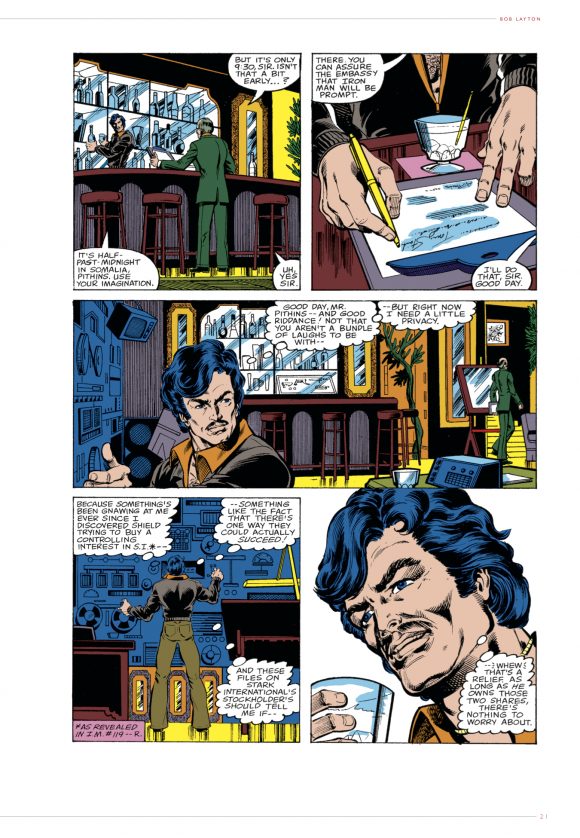
Issue #124
Ryall: Also in this issue, Tony’s drinking was already a bit more noticeable than was common for superheroes of that era. As you built to the Demon in a Bottle story in Issue #128 (not collected here but available in its own highly recommended TPB), was there any pushback from editorial or even the Comics Code Authority about his boozing? And did you already know where this subplot was headed here?
Layton: Of course we knew where it was heading! David and I felt that we needed to create a personal problem for Tony Stark that fit the world of corporate business that we set him in. Playing on his passions and somewhat compulsive behavior, the alcohol story seemed somewhat to be a natural.
As I said earlier, my primal memory of Iron Man was him having a heart attack every goddamned issue. I don’t know anyone, outside of Dick Cheney, who has had 50 heart attacks and lived! Also, even by the late ’70s, heart transplants and artificial hearts were commonplace and the smartest guy in the world couldn’t figure out how to fix his own heart problem? Give me a break!
David and I wanted to create a weakness for Stark that wasn’t the “heart attack of the month.” Tony’s alcoholism, constantly hanging over him like the Sword of Damocles was one thing his battle armor, his charisma, and his technological genius couldn’t fix. The killing of the ambassador and losing control of his armor were all designed to send Tony over the edge by Iron Man #128.
I remember David and me pitching the Demon in a Bottle concept to the Editor-In-Chief in his office. After we finished, all we were told was, “OK. Don’t screw it up.”
That was it.
And, there was zero blow-back from the Comics Code Authority, either. Go figure?!
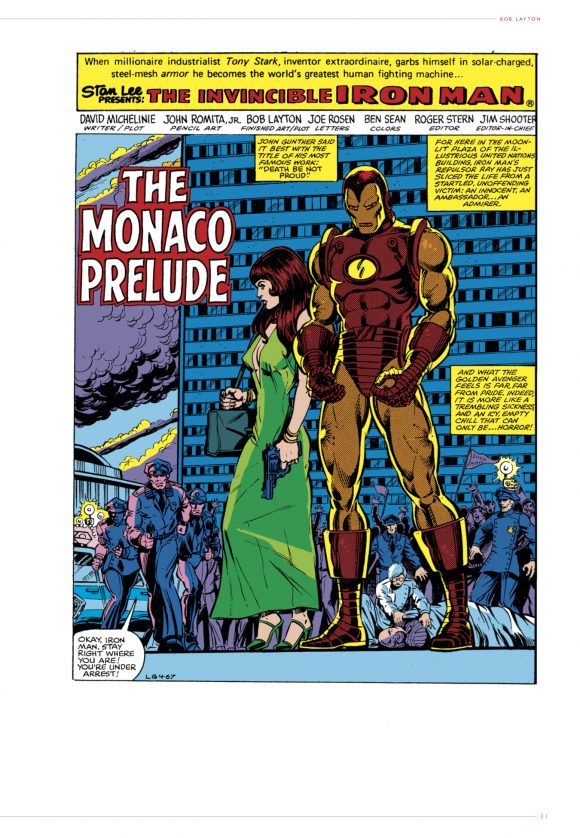
Issue #125
To be honest, not once during the time we were creating that arc did we ever think that we were creating comics history in the process. That storyline was merely a logical extension of what we had planned for the character from the beginning.
Of course, we had no idea how strongly the fans would react either. David and I were simply telling our Iron Man story. The only difference was that the villain in that particular issue was Tony Stark himself.
Obviously, the Demon in a Bottle saga was extremely controversial. However, it was well-received, in spite of, or perhaps because of, its groundbreaking subject matter.
—
The Bob Layton: The Invincible Iron Man Artist Select Series is out 12/19.

December 12, 2018
I fondly remember reading this run. IronMan became one of my favorites for sure. The later work where the armor went silver and more box-y wasn’t of particular interest but those early stories and stories with Doom and King Arthur were great! Perfect mix of visuals and writing.
My only complaint with the book is they should have included the last issue just before their first story premiered. It would be nice to quickly remember how bad things were to fully understand how great things got.
September 25, 2020
Mr. Layton really does get the Iron Man character.